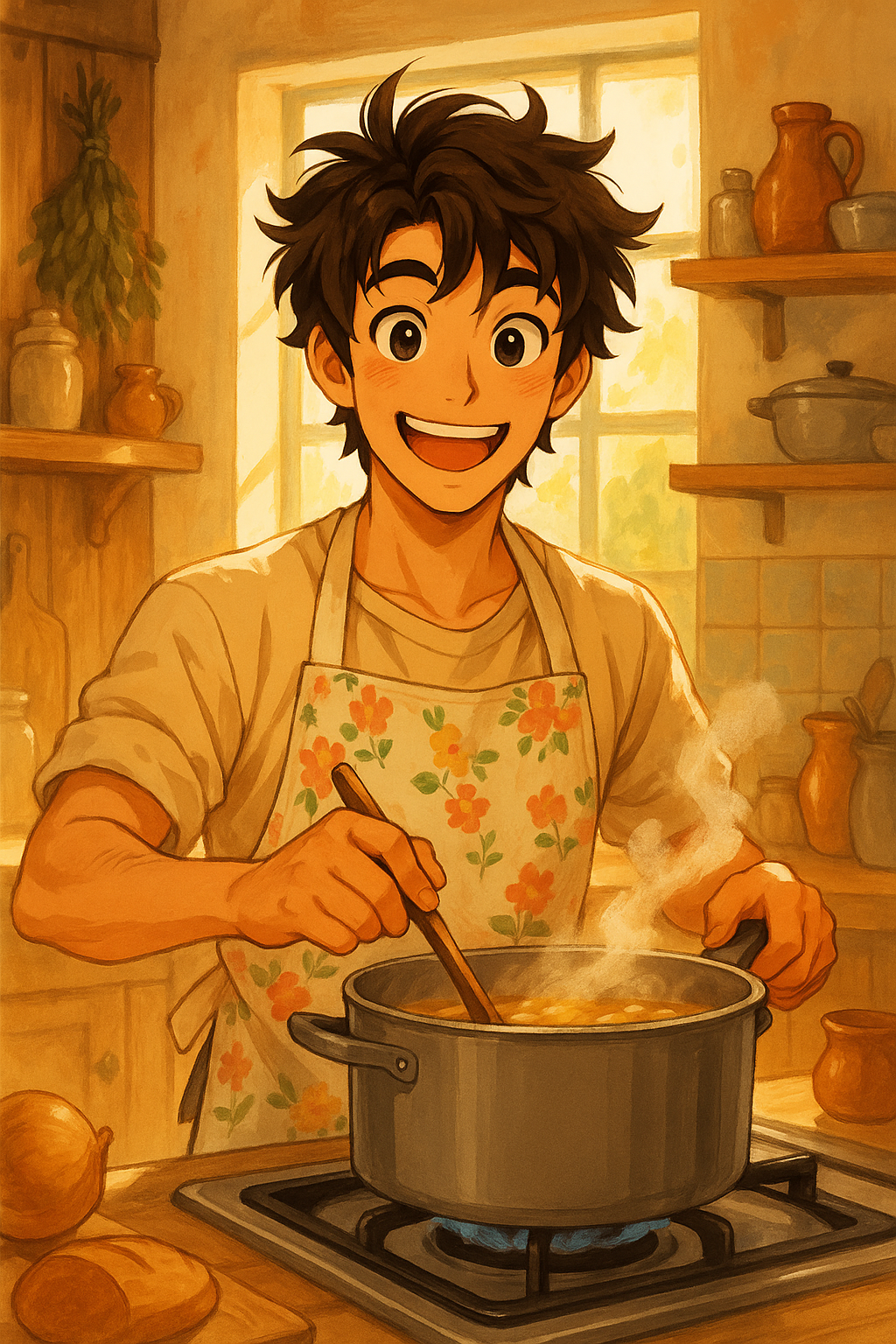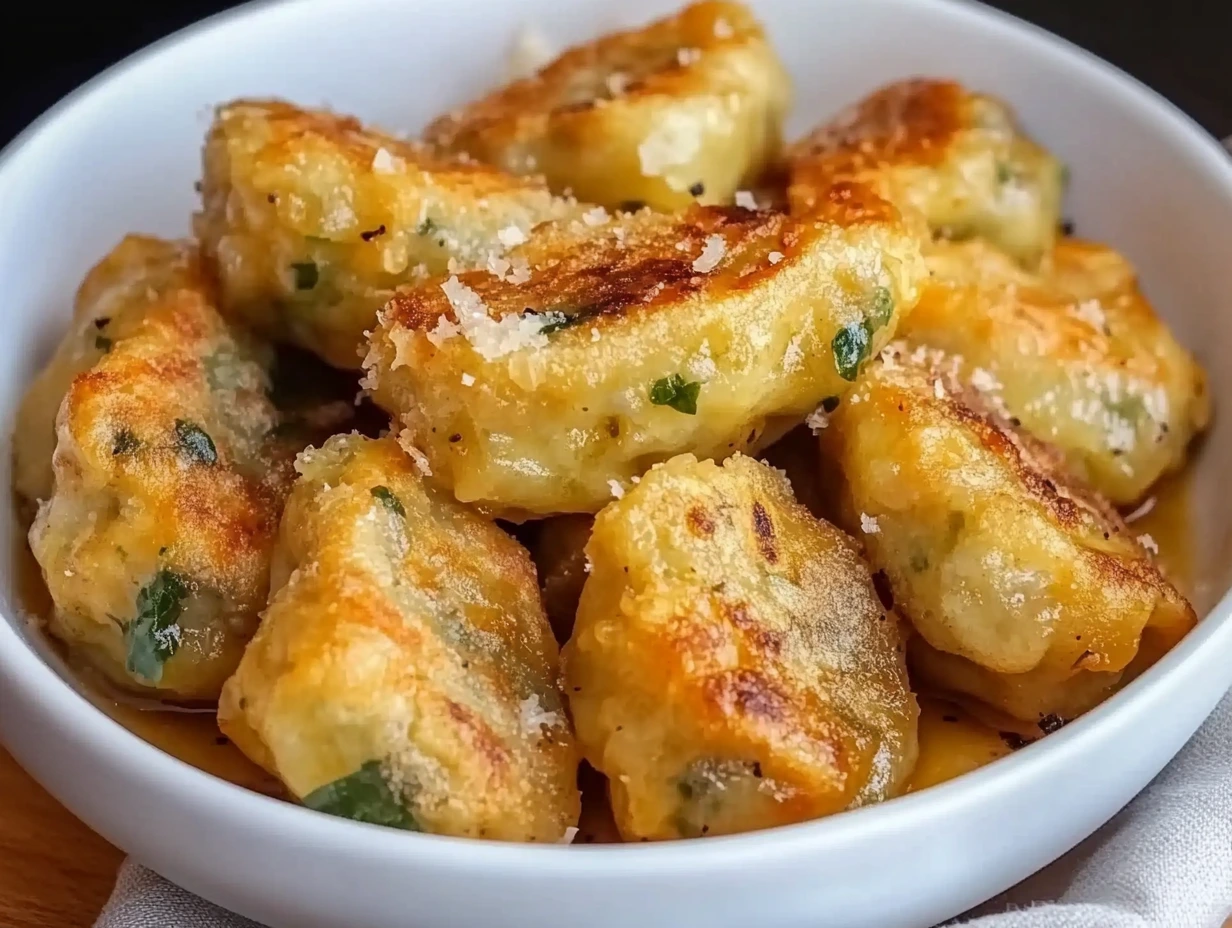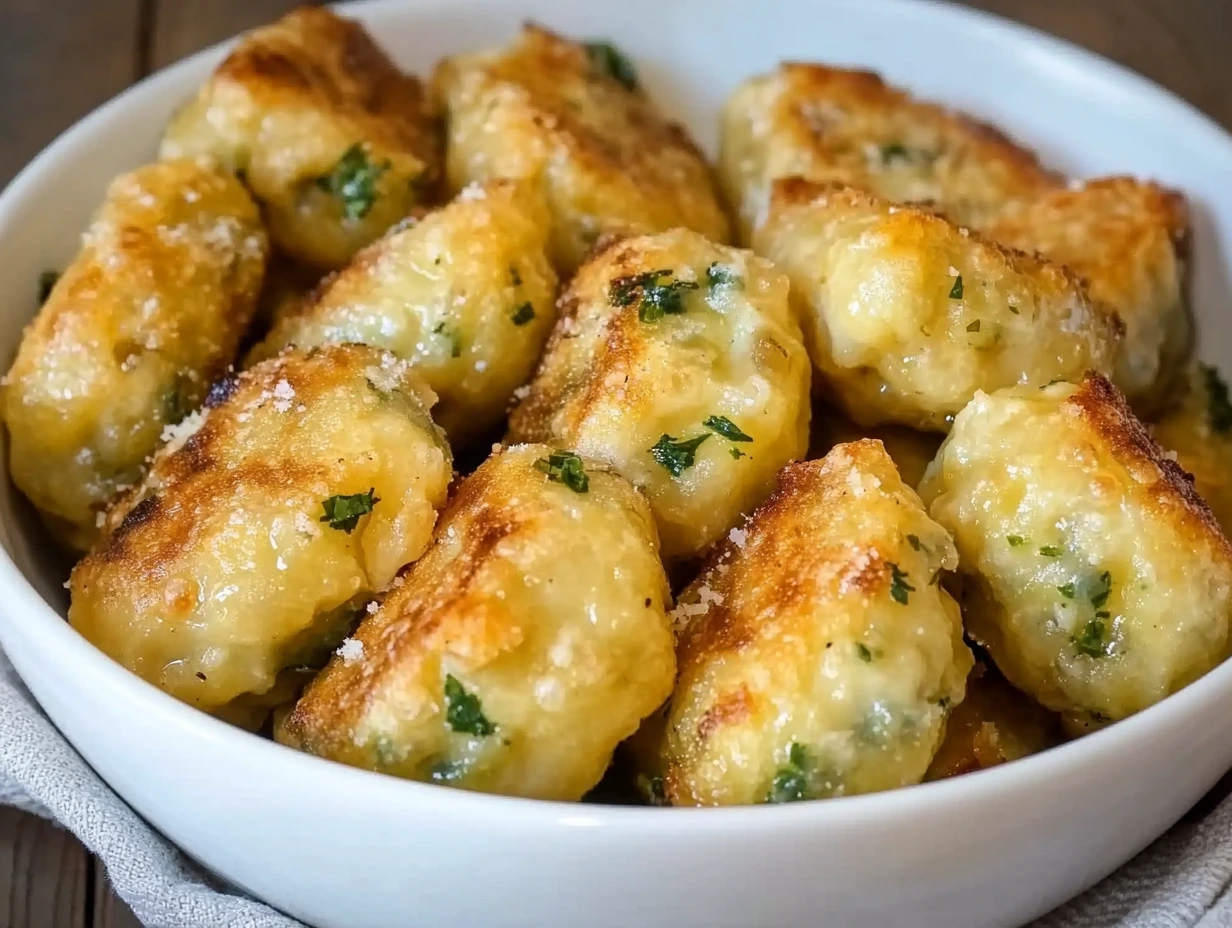There’s something so satisfying about making dumplings from scratch. Especially the kind that take just a few simple ingredients and turn into warm, chewy bites of comfort. These boiling water dumplings are exactly that—simple, nostalgic, and endlessly adaptable. Whether you’re ladling them into a bowl of soup or tossing them in garlic butter, they always manage to feel like home.
I first started making these on a whim one chilly afternoon when I was low on groceries and craving something hearty. A quick scan of the pantry, a bit of trial and error, and—just like that—I had stumbled upon a new favorite. Now they’ve become a regular part of our weeknight rotation. Sometimes I keep them plain, sometimes I throw in a little Parmesan and cracked pepper for an extra kick. They’re versatile like that.
If you’ve never made dumplings like these before, don’t worry—this recipe keeps things super approachable. There’s no yeast, no fancy equipment, and no long resting times. All you need is some flour, hot water, and a few minutes of your time. Let’s dive right into it.
WHAT YOU’LL NEED FOR THE DUMPLINGS
Before we get into the step-by-step instructions, here’s a quick glance at what you’ll need:
Basic Ingredients:
-
1 cup all-purpose flour (plus a little extra for dusting)
-
1/2 teaspoon salt
-
1/2 cup boiling water
-
1 tablespoon vegetable oil (optional, to keep the dough from sticking)
Optional Add-Ins (to customize the flavor):
-
Fresh herbs like parsley, dill, or chives
-
Grated cheese such as Parmesan or cheddar
-
Ground black pepper or a pinch of paprika for a touch of spice
The beauty of these dumplings is in their simplicity, but that doesn’t mean you can’t get creative. I’ll share some tips for variations later on, but first—let’s get the dough going.
STEP 1: MAKING THE DOUGH
This part is all about mixing and kneading—nothing fancy, just a little hands-on time.
In a large mixing bowl, combine 1 cup of all-purpose flour with 1/2 teaspoon of salt. Now, slowly pour in 1/2 cup of boiling water. And yes, it needs to be boiling—not just hot—because the high temperature is what helps create that smooth, stretchy texture that sets these dumplings apart.
As you pour in the water, stir quickly using a wooden spoon or silicone spatula. You’ll notice the mixture will look a bit rough and clumpy at first—that’s totally normal. Once most of the flour is incorporated, use your hands to bring the dough together in the bowl.
It should start to form a soft, cohesive ball. If it feels too sticky, sprinkle in a bit more flour. If it’s dry or cracking, add a tiny splash of water. The goal is a smooth, slightly tacky dough that holds together without sticking all over your hands.
At this point, you can knead it gently for about 1–2 minutes, just until everything’s well combined. No need to overwork it—you’re not making bread here. Once it’s smooth, let it rest in the bowl for a few minutes while you clear off a space to shape the dumplings.
STEP 2: SHAPING THE DUMPLINGS
This is the part where the dough starts to look like something you’d actually want to eat.
Lightly flour your countertop or a large cutting board. Place your dough ball on the surface and divide it into small chunks, about the size of a walnut. Don’t stress too much about getting them all perfectly even—just aim for uniformity so they cook at the same rate.
You can roll each piece into a ball, or flatten them slightly with your fingers for a more rustic look. I like to mix it up—some round, some a little flatter. It adds a bit of charm to the final dish.
At this stage, if you’re planning to set them aside for a few minutes before cooking, go ahead and toss them lightly in vegetable oil or dust with extra flour to prevent sticking. This also makes them easier to handle when you’re ready to boil.
STEP 3: BOILING THE DUMPLINGS TO PERFECTION
Start by bringing a large pot of salted water to a boil. You want the water to be at a rolling boil—bubbles breaking the surface and lots of movement. The salt is important here, too. It adds a little flavor to the dumplings and helps with texture. I usually go with about a tablespoon of salt for a standard-sized pot.
Once the water is boiling, gently drop in the dumplings one at a time. Don’t overcrowd the pot—you want them to have enough space to cook evenly without sticking together. If you’re making a full batch, cook them in two rounds to be safe.
After adding the dumplings, give them a gentle stir with a wooden spoon. This helps prevent them from sticking to the bottom or clumping together. Then reduce the heat slightly to maintain a soft boil (medium heat usually does the trick) and cover the pot loosely with a lid.
Let them cook for 8 to 10 minutes. You’ll know they’re ready when they float to the top and feel slightly firm to the touch. You can scoop one out and cut it open if you’re unsure—it should be cooked through with a soft, consistent texture inside.
Once they’re done, use a slotted spoon to lift them out of the water and transfer them to a serving dish or skillet, depending on how you plan to serve them.
STEP 4: SERVE & CUSTOMIZE TO YOUR HEART’S CONTENT
Here’s where the magic happens. Boiled dumplings are incredibly adaptable, so don’t be afraid to experiment with your favorite flavors. Here are a few ideas to get you started:
1. Tossed in Melted Butter & Herbs
This is my go-to, especially when I want something quick and comforting. Just melt some butter in a pan, add a handful of chopped fresh herbs (like dill, parsley, or chives), and toss the dumplings until they’re glossy and fragrant. A little salt and cracked black pepper finish it off beautifully.
2. Garlic Butter Sauce
If you want something a bit more indulgent, sauté a couple of minced garlic cloves in butter until fragrant, then add the dumplings and pan-fry for 2–3 minutes to crisp up the edges. It’s cozy, rich, and totally satisfying.
3. Add to Soups and Stews
These dumplings are perfect for dropping into brothy soups or hearty stews. They soak up flavor without falling apart, which makes them a great substitute for noodles or potatoes. I especially love them in a classic chicken soup or a creamy vegetable stew.
4. Top with Cheese
A sprinkle of grated Parmesan or cheddar while the dumplings are still warm adds an extra layer of deliciousness. The cheese melts slightly, clinging to the surface, and gives each bite that extra savory punch.
5. Spice It Up
Want to add a little flair? Toss the cooked dumplings with a bit of smoked paprika, chili flakes, or even a drizzle of chili oil. You’ll get a beautiful color and a warm, spicy flavor that’s hard to resist.
HELPFUL TIPS FOR BEST RESULTS
Over the years, I’ve picked up a few little tricks that help make this recipe even easier—and tastier:
-
Don’t skip the boiling water when making the dough. It’s what gives the dumplings their soft, stretchy texture.
-
Knead gently but thoroughly. You want the dough to be smooth, but not overworked.
-
Test one dumpling before cooking the whole batch. It’s a great way to check the texture and tweak the seasoning if needed.
-
Customize the dough. Feel free to mix herbs, spices, or even cheese directly into the dough before shaping. Just don’t overload it—too many mix-ins can affect the texture.
FREQUENTLY ASKED QUESTIONS
1. Can I make the dumpling dough ahead of time?
Yes, absolutely. You can prepare the dough up to a day in advance. Wrap it tightly in plastic wrap and store it in the fridge. Let it come to room temperature before shaping and cooking—it’ll be easier to work with that way.
2. What’s the best way to store leftover cooked dumplings?
Once cooked, leftover dumplings can be stored in an airtight container in the fridge for up to 3 days. To reheat, you can steam them briefly, warm them in a pan with a little butter, or even microwave them (though they may get a bit softer).
3. Can I freeze these dumplings?
Yes! After shaping the dumplings (but before boiling), place them on a baking sheet lined with parchment paper and freeze until solid. Then transfer them to a zip-top freezer bag. Boil them straight from frozen—just add an extra minute or two to the cooking time.
4. Can I use whole wheat flour instead of all-purpose?
You can, but expect a denser texture. If you want to make them a little healthier, try using a half-and-half mix of whole wheat and all-purpose flour for better balance in texture.
5. Why do my dumplings fall apart while boiling?
This usually happens if the dough wasn’t kneaded enough or if too much water was added. Make sure the dough is smooth and cohesive before shaping. Also, stir gently during cooking to avoid tearing.
6. What other seasonings work well in the dough?
Besides salt, you can mix in a bit of garlic powder, onion powder, or even a pinch of curry powder or Italian seasoning. Just keep it light—you don’t want to overpower the dumpling’s mild, comforting flavor.
7. Can I stuff these dumplings with filling?
While this recipe is designed for plain dumplings, you can flatten the dough slightly and wrap it around a small amount of filling like cooked mushrooms, cheese, or mashed potatoes. Just be careful not to overfill, or they may burst open while boiling.
FINAL THOUGHTS: SIMPLE COMFORT, MADE FROM SCRATCH
There’s something deeply satisfying about creating something delicious out of basic pantry staples. These boiling water dumplings check all the boxes: easy, budget-friendly, cozy, and endlessly adaptable. Whether you’re tossing them in butter for a quick weeknight meal or stirring them into a bubbling pot of soup, they’re the kind of food that brings comfort with every bite.
I hope this recipe finds a home in your kitchen the way it has in mine. Try it once, and you’ll see just how easy it is to fall in love with these chewy little gems. And once you do, don’t be afraid to make them your own—experiment with herbs, spices, and sauces to match your mood (or your fridge contents).
If you give this recipe a try, I’d love to hear how it turned out. Drop a comment, share your favorite variations, or let me know what you paired them with. There’s no wrong way to enjoy dumplings—and the more creative, the better.
Until next time, happy cooking!
Print
BOILING WATER DUMPLINGS
- Total Time: 20 minutes
Description
Soft, chewy, and incredibly versatile, these dumplings are made with just a few pantry staples and can be served plain, tossed in butter, or added to soups and stews. Perfect for a cozy, comforting meal.
Ingredients
For the Dumplings:
- 1 cup all-purpose flour (plus extra for dusting)
- 1/2 tsp salt
- 1/2 cup boiling water
- 1 tbsp vegetable oil (optional, for preventing sticking)
Optional Add-Ins:
- Fresh herbs (parsley, dill, or chives)
- Grated cheese (Parmesan or cheddar)
- Black pepper or paprika (for seasoning)
Instructions
1️⃣ Prepare the Dough:
In a large bowl, mix the flour and salt. Slowly pour in the boiling water while stirring quickly with a wooden spoon or silicone spatula. Once the dough begins to form, knead it gently in the bowl until it comes together in a smooth ball. Add a little flour if it’s too sticky, or a splash of water if too dry.
2️⃣ Shape the Dumplings:
Transfer the dough to a floured surface. Divide into small pieces about the size of a walnut. Shape each into a ball or flatten slightly. Coat lightly with oil or dust with flour to prevent sticking.
3️⃣ Cook the Dumplings:
Bring a large pot of salted water to a boil. Carefully add the dumplings, spacing them apart. Stir gently to prevent sticking. Reduce the heat to medium, cover, and cook for 8–10 minutes until they float and feel firm.
4️⃣ Serve and Enjoy:
Use a slotted spoon to remove the dumplings. Serve plain, with melted butter, or toss in garlic butter and herbs. Great alongside soups, stews, or roasted veggies. Top with cheese for an extra treat.
Notes
- Dough consistency: The dough should be soft but not sticky. If it’s too sticky, add flour a little at a time; if too dry, add water very gradually.
- Boiling water: Using boiling water helps partially cook the flour, giving the dumplings a tender, chewy texture.
- Cooking time: Dumplings are done when they float to the surface and feel firm but not hard when pressed gently.
- Prep Time: 10 minutes
- Cook Time: 10 minutes




